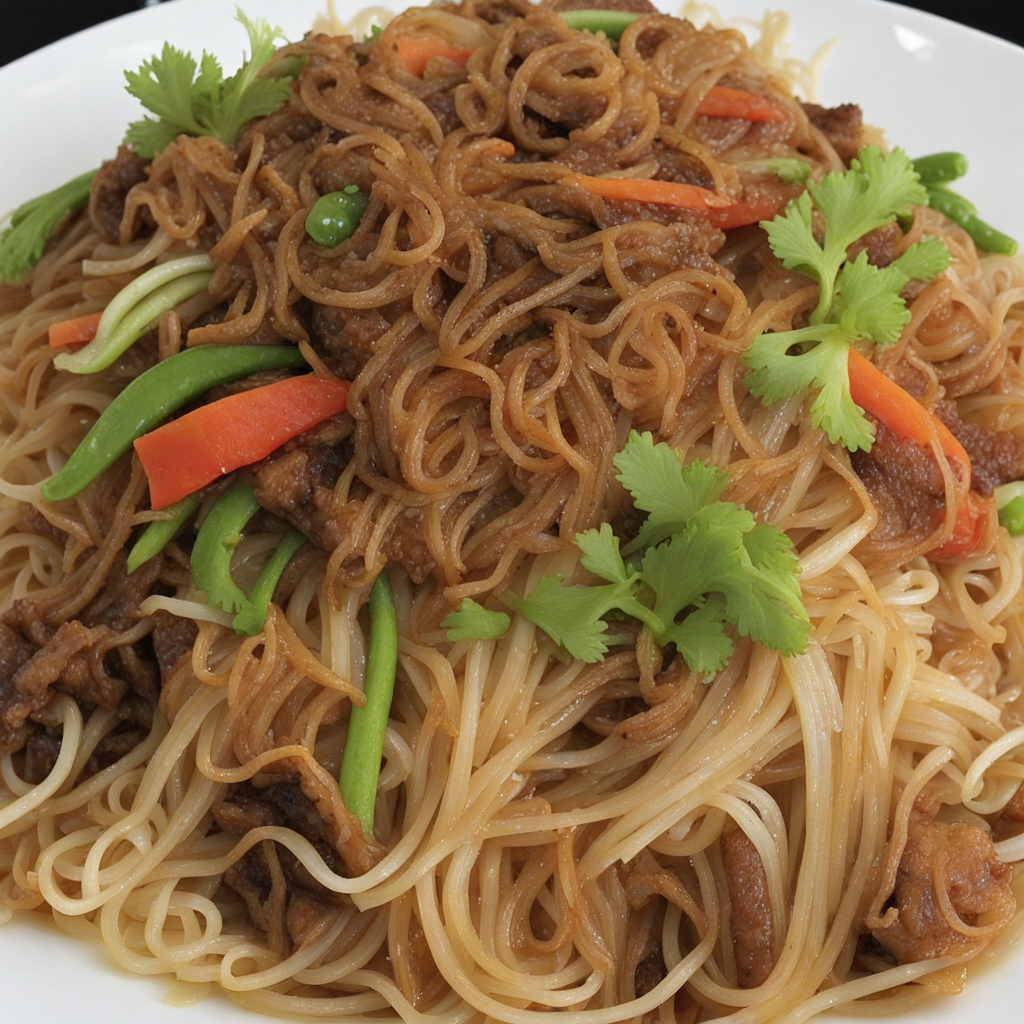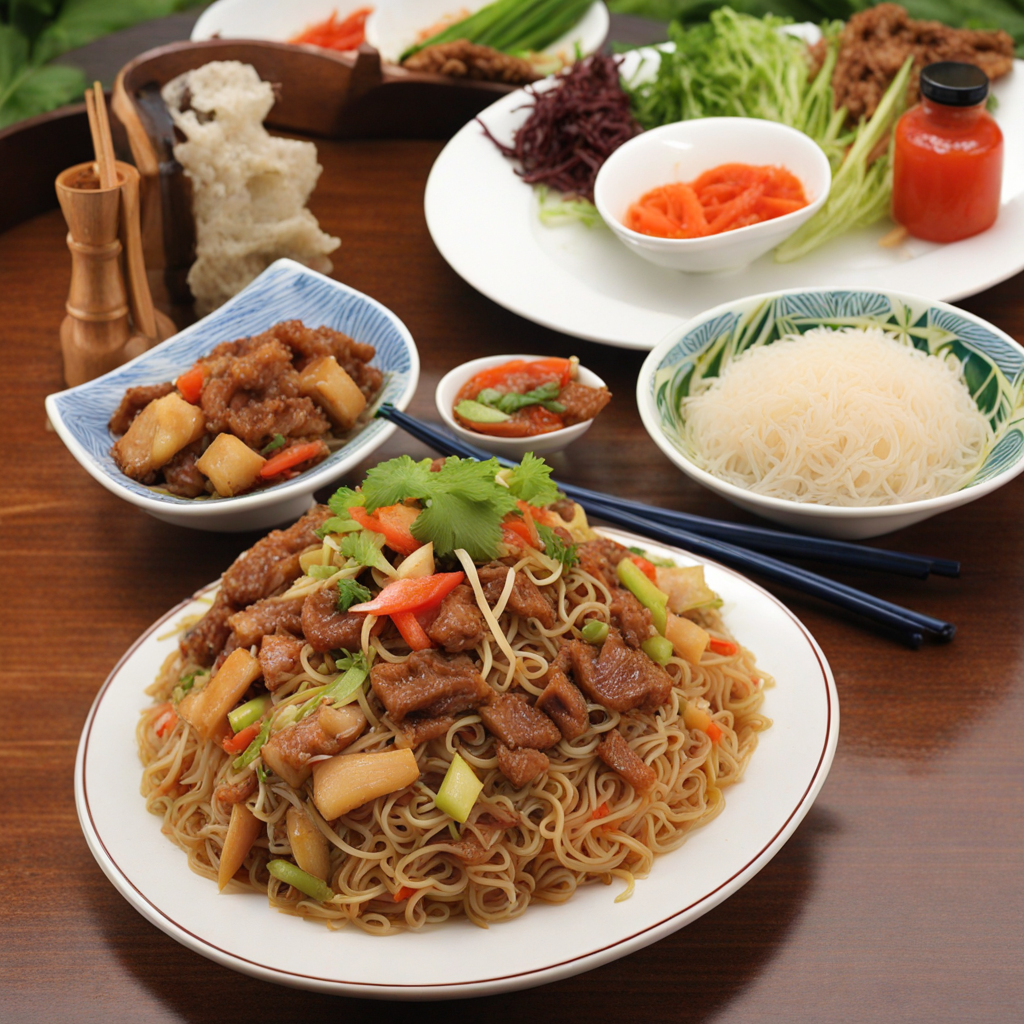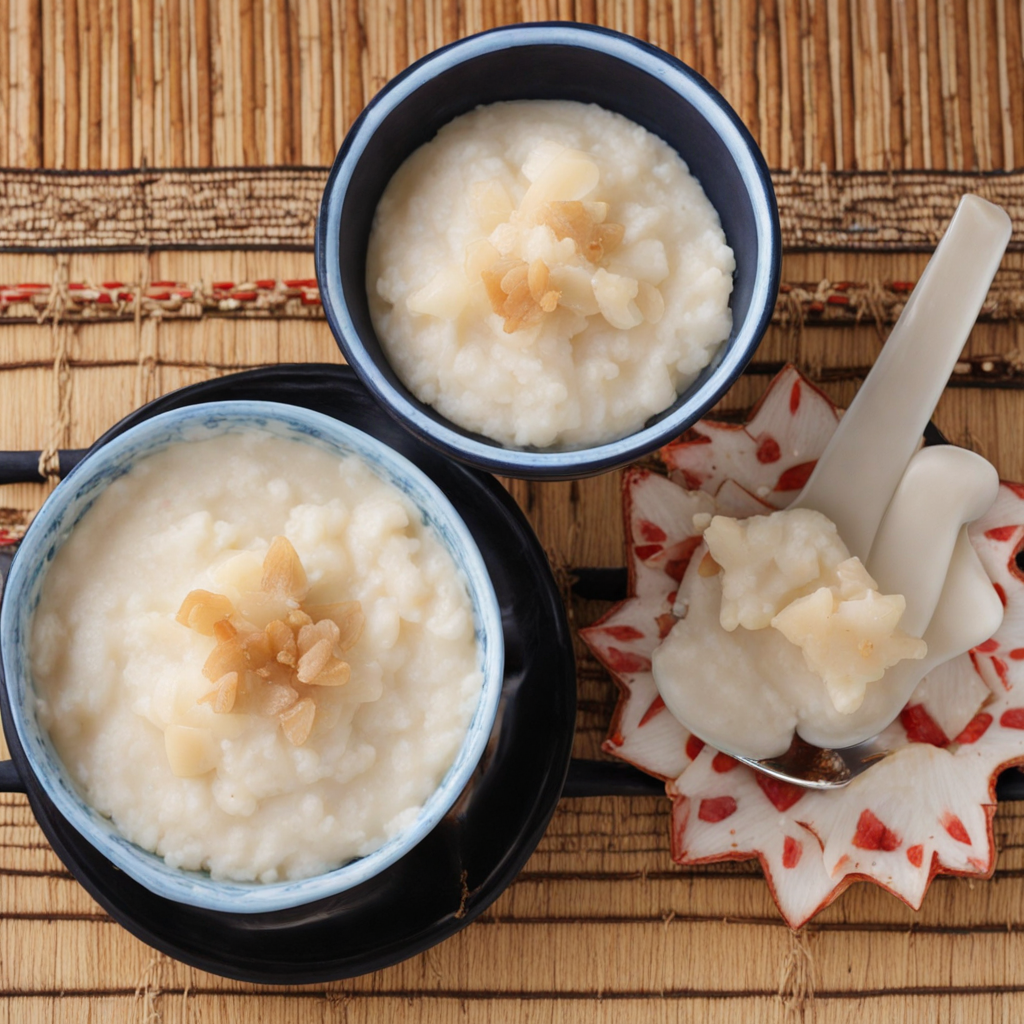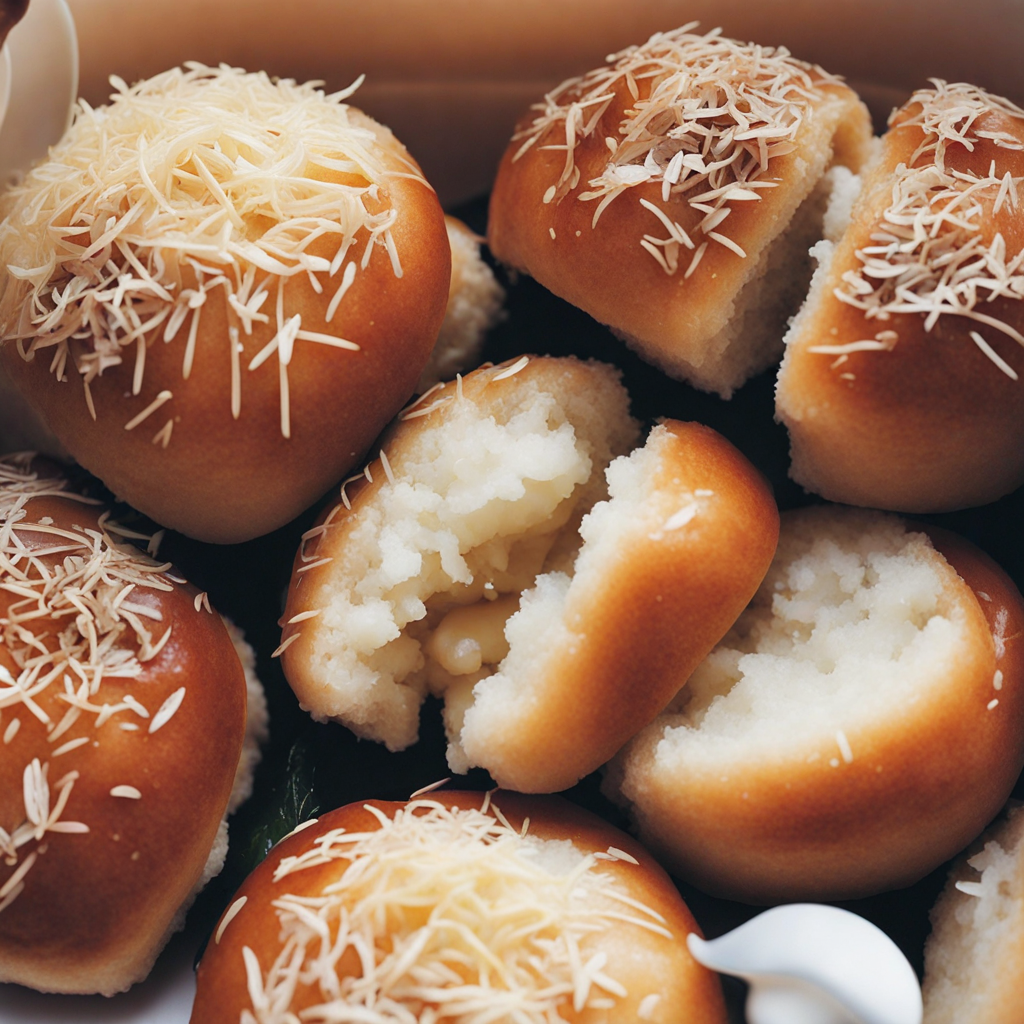Sapasui
Sapasui, also known as Samoan chop suey, is a delightful and hearty dish that reflects the rich culinary heritage of Samoa. This savory dish typically features a base of tender vermicelli noodles, which are expertly stir-fried with a medley of fresh vegetables like carrots, cabbage, and bell peppers. The vibrant colors and crisp textures of the vegetables bring a refreshing crunch to each bite, while the noodles provide a satisfying chewiness that makes Sapasui filling and comforting. The flavor profile of Sapasui is both savory and slightly sweet, largely thanks to the combination of soy sauce and a touch of garlic. Often, pieces of marinated meat, such as chicken, beef, or pork, are added to the mix, enhancing the dish with rich umami notes. The meat is usually cooked until tender, allowing it to absorb the flavors of the sauce and meld beautifully with the vegetables and noodles. Each forkful encapsulates the essence of Samoan home cooking, making it a beloved staple at family gatherings and celebrations. This dish is not only delicious but also versatile, allowing for personal adaptations based on seasonal ingredients or dietary preferences. Whether enjoyed on its own or served as a side dish, Sapasui invites you to savor the community spirit of Samoan culture, where food brings people together. Its comforting warmth and satisfying flavors make it an excellent choice for anyone looking to explore new tastes and experience the heart of Samoa's vibrant culinary landscape.
How It Became This Dish
Sapasui: A Cultural and Culinary Journey Through Samoa Sapasui, also known as Samoan chop suey, is a beloved dish that has become an integral part of Samoan cuisine and culture. This hearty meal features a delightful combination of meat (commonly chicken or pork), vegetables, and vermicelli noodles, all simmered together in a savory sauce. The dish is not only a staple in family gatherings and feasts but also a poignant reflection of Samoa's rich history and cultural evolution. Origins of Sapasui The origins of sapasui can be traced back to the 19th century when Chinese immigrants began to arrive in Samoa and other Pacific islands. These immigrants brought with them their culinary traditions, which included various stir-fried noodle dishes. The name "sapasui" itself is derived from the Chinese term for chop suey, a dish that traditionally consists of meat and vegetables stir-fried with a sauce. However, sapasui has taken on a distinctly Samoan identity over the years, adapting to local tastes and ingredients. The interaction between the Chinese and Samoan cultures was not merely confined to food; it was reflective of broader socio-economic exchanges. As the Chinese community settled in Samoa, they established businesses, from grocery stores to restaurants, contributing significantly to the local economy. Their culinary influence gradually permeated Samoan households, particularly as families sought ways to incorporate new ingredients into their diets. Cultural Significance Sapasui is more than just a dish; it embodies the spirit of Samoan hospitality and communal living. In Samoan culture, food plays a crucial role in social gatherings, celebrations, and rituals. Sapasui is often served at feasts, known as "fa'alavelave," which are held for various occasions, including birthdays, weddings, and funerals. The act of sharing meals is a vital part of Samoan tradition, symbolizing unity and togetherness. The preparation of sapasui is a communal affair. Families often gather to cook together, with each member contributing to the process. This collaborative spirit fosters strong bonds within families and communities, reinforcing the importance of relationships in Samoan society. The dish is typically prepared in large quantities to accommodate the communal nature of feasts, ensuring that everyone can partake in the meal. In addition to its role in family gatherings, sapasui also serves as a symbol of cultural resilience. The dish reflects the blending of diverse culinary traditions, showcasing how food can serve as a bridge between cultures. It represents the adaptability of Samoan cuisine, which has absorbed and transformed influences from various cultures over time while maintaining its unique identity. Development Over Time As Samoa entered the 20th century, sapasui continued to evolve. It became a popular dish not only among Samoans but also among other Pacific islanders and expatriates. The accessibility of ingredients, including noodles and soy sauce, increased, allowing for variations in recipes and preparation methods. While traditional sapasui uses vermicelli noodles, modern adaptations might incorporate other types of noodles or additional ingredients, reflecting individual preferences and the availability of local produce. The influence of globalization has also played a role in the evolution of sapasui. As Samoa became more connected to the world, new culinary trends and techniques emerged. Chefs began experimenting with sapasui, introducing elements such as different spices, sauces, and even fusion dishes that combine sapasui with other cuisines. This evolution has led to a dynamic culinary landscape in Samoa, where traditional dishes coexist and interact with contemporary culinary practices. In recent years, there has been a renewed interest in traditional Samoan foods, driven by a desire to preserve cultural heritage and promote local ingredients. This movement has encouraged chefs and home cooks alike to return to the roots of dishes like sapasui, emphasizing the importance of using fresh, locally-sourced produce. The focus on sustainability and health has also influenced the preparation of sapasui, with many opting for leaner meats, more vegetables, and reduced sodium in their recipes. Sapasui Today Today, sapasui remains a staple in Samoan households and is celebrated for its versatility. It is commonly prepared for family gatherings, church events, and community celebrations, embodying the warmth and generosity of Samoan hospitality. The dish has also found its way onto restaurant menus in Samoa and abroad, allowing a wider audience to experience the flavors and traditions that sapasui represents. Moreover, the global interest in Samoan culture has led to a growing appreciation for its culinary heritage. Food festivals, cooking classes, and cultural events often feature sapasui, showcasing its significance as a dish that connects people to their roots. Social media platforms have also played a role in this revival, with food enthusiasts sharing their own versions of sapasui, experimenting with ingredients, and celebrating the dish's cultural importance. Conclusion Sapasui is more than just a meal; it is a narrative of cultural exchange, resilience, and community. Rooted in the historical interplay between Chinese immigrants and the Samoan people, it has evolved into a symbol of Samoan identity, embodying the values of hospitality and togetherness. As it continues to adapt to changing times and tastes, sapasui remains a cherished dish that nourishes not only the body but also the spirit, reminding us of the importance of food in forging connections and preserving cultural heritage. In every bowl of sapasui, there lies a story—a story of a people, their history, and their unwavering commitment to community and tradition.
You may like
Discover local flavors from Samoa







